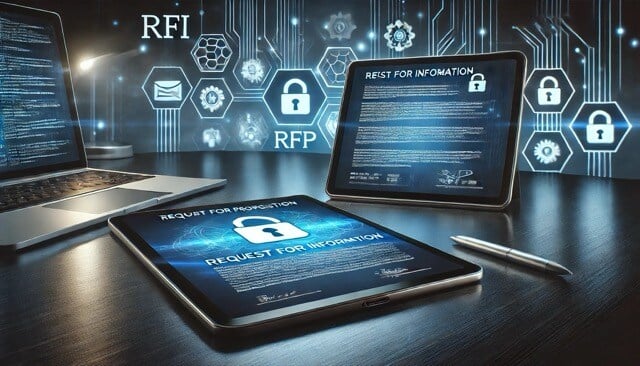It is no surprise to readers that the COVID-19 pandemic vastly catalyzed digital business. From the rapid, necessary adoption of remote work to the precipitous rise in the adoption of new technologies to support an unprecedented shift in consumer behavior, digital transformation went from a long-term aspiration to an immediate initiative for many enterprise-level organizations to deliver new customer experiences. As the digital age continues to rage on, more and more organizations have begun their digital transformation journey. Yet, with new digital technologies such as the cloud, the convergence of IT and operational technologies, AI, and IoT comes an ever-expanding threat surface and a growing list of risk decision-makers outside IT and cyber risk teams. It is paramount for security teams and leaders to align cybersecurity and digital transformation by recognizing that their role is shifting in this new age. Here, we will dive into three key steps for secure digital transformation.
Keeping Security in the Digital Transformation Conversation
As we have seen in the past few years, the role of the CISO has shifted. Digital transformation has only accelerated this change from a siloed technical leader to an essential business leader.
With digital transformation escalating to an executive and board-level issue, CISOs must commit to being a part of the conversation from the start and staying apart through the process. We see digital transformation forcing many CISOs to embrace their new role as business and technical leaders in their organizations. While this transition can be challenging for some security leaders, it is essential as they can provide insight into the new potential risks that can emerge from a given digital transformation strategy.
According to Ponemon's Digital Transformation and Cyber Risk report, 82% of IT security and C-level respondents said they experienced at least one data breach because of digital transformation. With many more enterprise members at large adopting technologies across the board - from marketing to finance to operations, the decision-makers capability of adding new risks to the organization has never been greater. As a result, information security leaders and teams need to position themselves as a resource for consultation and training during these decision processes to save time and headaches.
Align Cyber and IT Risk with Business Objectives
While the need to align IT and cyber risk with business objectives predates the demand for digital transformation, it has never been more critical than during and after a digital transformation initiative.
The alignment between cyber risk management and business objectives has two sides: alignment around communication at the leadership level and alignment around execution and management.
Cyber in Business Context
Putting cyber in a business context supports the first step we discussed earlier, the need for the CISO to emerge as a business leader, enabler, and technical leader. This comes primarily from ensuring that the technology the organization invests in can illustrate cyber and IT risk in an understandable manner and provide actionable insights for business decision-making. Furthermore, it is a matter of ensuring that the management solutions are agile enough to support real-time visibility to ensure that the information used in decision making is either real-time or as close as possible. Lastly, CISOs and security leaders must adjust to presenting program information in an understandable and actionable way alongside their data.
Discover best practices for reporting cybersecurity to the Board here.
Continuous Assessments are Essential for Secure Digital Transformation
On the execution and management level, periodic, static assessments are behind us. No longer can enterprises rely on assessments conducted months prior or, in some cases, annually. The risk landscape is changing too fast. As a result, organizations must embrace cyber risk transformation alongside or before digital transformation to support secure digital transformation. This means enabling risk teams with automation seen in other business units, solutions capable of automating either portion of or, at best, the entire assessment process using AI and machine learning. And why not? If the rest of the organization can benefit from the slew of new technologies emerging, why should the teams keeping the enterprise secure get some as well?
Integrate Vendor Risk with Internal Risk Management
One of the common threads of any digital transformation initiative is the increased reliance on vendors to implement new technologies and achieve the new customer experiences that enterprises seek. As such, vendor risk teams can no longer operate siloed from internal risk management teams. From the Ponemon study, 55% of respondents said [third parties] were responsible for at least one of their breaches. Despite the reliance on third parties, 58% said they do not have a third-party cyber risk management program, and 56% of C-level executives said it was challenging to know whether third parties had policies and practices to guarantee their information security (CSO).
From what we have seen, the issue here is the modularity of many legacy GRC systems. Too often, we see large GRC tools offering a vendor risk management (VRM) module or organizations turning to a separate VRM solution outside their internal risk management solution. This disconnect between the enterprise’s needs today - a fully cyber risk management program that includes internal and vendor risk - and some market solutions is setting many organizations up for an adverse cyber event post-digital transformation.
By aligning VRM and internal risk teams, organizations take a more holistic approach to risk management and embrace the present and future. They realize that businesses are no longer islands. They are ecosystems.
Taking the Steps for Secure Digital Transformation
By keeping security leaders in the digital transformation conversation, aligning cyber and IT risk with business objectives, and integrating vendors with IT and cyber risk, the enterprise has a strong foundation for building for the digital age. To learn more about steps your organizations can take for secure digital transformation, watch CyberSaint’s webinar, Three Steps for Secure Digital Transformation.





.png)
.png)
.png)
%201.png)
.png)




